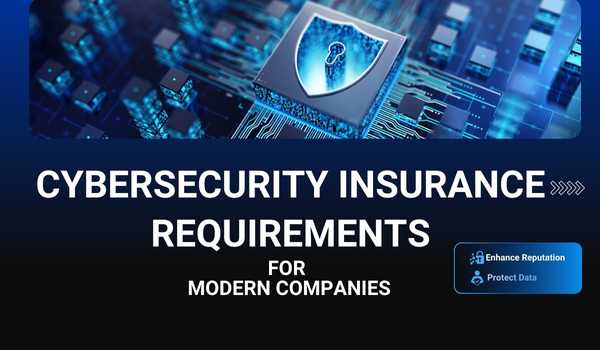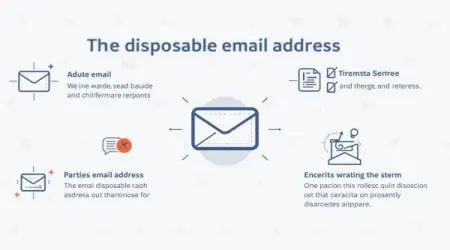Ten Cybersecurity Insurance Requirements Companies

Achieving cyber insurance coverage has become increasingly more difficult due to the growing list of prerequisites. Modern businesses are facing increasing cyber threats such as ransomware, phishing, and data breaches on almost a daily basis, if not more. Due to the increasing risks, companies are adopting cyber insurance policies to minimise financial risks and losses. Companies must also demonstrate proper organisational frameworks, governance, risk management controls, and technical tools to qualify for coverage. This article will go over the ten cybersecurity insurance requirements that, if met, will adequately protect your business.
Ten Best Life Insurance Investment Companies
Ten Cybersecurity Insurance Requirements for Modern Companies
i. Multi-Factor Authentication (MFA)
Most companies require MFA nowadays, making it a base-level security control across organizations. Two-step verification seeks to confirm a user's identity by using two different factors, such as passwords, fingerprints, or mobile devices, alongside the individual's identity. MFA is more impactful than requiring additional passwords when entering systems, as it safeguards against theft and fraud.
Why it matters: Credential theft is common in remote work settings, and the risk of someone gaining unauthorized access to sensitive information increases exponentially. MFA drastically decreases such risks.
ii. Backing Up Sensitive Information
In the case of ransomware attacks, accidental deletions, and system malfunctions, backups serve as an added safety precaution. Insurers expect the following from a business:
Backups are made routinely (daily or weekly).
Set in a safe, remote location or the cloud.
Restoration checks are conducted at set intervals.
Why it matters: Insurers view your risk profile as increasing when cyber incidents occur, and your ability to recover is nonexistent.
iii. Endpoint Detection and Response (EDR)
Threats are contained before they spread, as EDR tools scan devices like laptops, servers, and mobile phones for suspicious activity. Compared to traditional antivirus software, EDR provides an additional layer of protection.
Why it matters: Insurance providers require evidence demonstrating the ability to quickly identify and respond to cyberattacks to mitigate damages and downtime.
IV. Cybersecurity Training for Employees
Staff training is essential in preventing cybersecurity threats while simultaneously addressing the most significant weakness. For most insurance providers, routine and current adjustments are mandatory.
Simulated phishing tests
Password creation and handling
Reporting procedures
Why it matters: The overwhelming percentage of breaches can be traced back to human error. Instructed personnel are proven to decrease overall risk.
v. Incident Response Plan (IRP)
An IRP is a response procedure at the disposal of a business to assist with dealing with a cybersecurity incident. It comprises
RMM,
Communication Approaches,
Recovery Strategies,
Post-incident work assessments.
Why it matters: Having an IRP in place will lower damages as marked by the IRP, as insurers anticipate damages.
vi. Vulnerability Management Program
An insurer requires a business to have a strategy that identifies and addresses gaps and weaknesses. A formally drafted program of vulnerability management consists of
Frequent vulnerability scans,
Risk appraisal investigations for concealed audits,
Patch setting frameworks.
Why it matters: As far as breaches go, systems that are not patched or overly permissive, along with stagnant vulnerabilities, are the primary root causes. Setting regular standards counters threats head-on.
vii. Governance and Access Controls
Identity and Access Management (IAM) aids in uploading permissions to users, thereby validating them to the level of control, data, and programs needed relative to their designated role. It encompasses:
Monitoring of privileged access,
Denomination of Accounts under Automated Privileged De-provisioning AI.
Why it matters: Stagnant accounts create a base of leakage while granting excess powers to users with dormant access, creating active security risk rotors. Governance and strips are a must for clients.
viii. Encryption Policies Shaping Data
Data, whether relocated or stored, is guarded under encryption. Guidelines employing state-of-the-art AES-256 encryption algorithms alongside sensitive and personally identifiable information (PII) and financial records delineate demands from insurers.
Why it matters: Attackers find encrypted information less applicable, which may lessen exposure risks in a breach.
ix. Secure Network Architecture
Insurers assess your IT network's design to validate its security integration. Secure architecture encompasses:
Firewalls alongside intrusion detection and prevention systems
Focus on sensitive environments (databases) with proper isolation/segmentation
Zero trust philosophies
Why it matters: Effectively implemented segmentation and monitoring policies limit lateral movement during breaches.
x. Cybersecurity Governance and Compliance
Governance refers to allocating responsibilities regarding the ownership, high-level policies, and supervision of cybersecurity. Insurers prefer entities that demonstrate.
C-suite ownership of cybersecurity has developed at the executive level or above.
Established cybersecurity compliance frameworks (ISO 27001, NIST, GDPR, etc.).
Conduct regular audits and risk evaluations.
Why it matters: Governance indicates maturity. Insurers generally value this as an indicator of lower risk.
Ten Best Home Insurance Companies
Conclusion
Cybersecurity insurance requirements are not only about having a policy but rather about proving that an organization is ready for persistent digital threats. Adhering to the ten policies set above improves the business security posture, as does the insurer's stance and the chances of claims and the insurers'. Remember that cybersecurity is an ongoing task that needs constant attention to the evolving threat landscape.
Top Ten Generative AI Chatbots
Take Action
Assess your cybersecurity insurance requirements and system weaknesses before security breaches exploit gaps. Examine the effectiveness of your cybersecurity measures, make the necessary changes, and communicate with your insurer to confirm that you comply with the most recent prevailing standards. What you do today might save you tomorrow.







